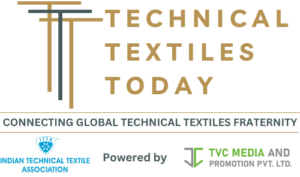
The size of the “Tie Layer Resin Market by Base Resins (LLDPE, LDPE, HDPE, PP, EVA), Type (Reactive, Non-Reactive), Application (Flexible, Rigid), End-use Industry (Food & Beverage, Pharmaceutical & Medical, Automotive), and Region – Global Forecast to 2029” report is expected to increase at a compound annual growth rate (CAGR) of 3.6% from USD 1.6 billion in 2024 to USD 1.8 billion in 2029. Due to a number of important variables, the medical industry is demonstrating a considerable prospective need for tie layer resins
The need for high-performance medical packaging is paramount to ensure the safety, sterility, and longevity of medical products. Tie layer resins play a crucial role in multi-layer packaging by providing strong adhesion between different materials, enhancing the barrier properties against contaminants, moisture, and oxygen. This is particularly important for medical devices, prescription drugs and sterile supplies. Furthermore, the medical industry is progressively using sophisticated polymer-based goods, including flexible medical films and catheter tubing, which call for dependable bonding solutions, which tie layer resins provide. Tie layer resins guarantee the mechanical integrity and functionality of medical components in complicated multi-layer systems, which are required due to the increased demand for less invasive medical treatments.
Download the brochure in PDF format.
Browse
170 Tables of Market Data
A comprehensive TOC with 320 pages, 65 figures, and the report “Tie Layer Resin Market – Global Forecast to 2029”
Among the well-known pivotal figures are:
Holdings B.V. Lyondell-Basell Industries (UK)
Japan’s Mitsubishi Chemicals, Inc. and the US’s Westlake Corporation
Japan’s Mitsubishi Corporation
US-based Exxon Mobil Corporation
Dow Jones (US)
Israel’s Polyram Group
US-based Zeus Company LLC
The Netherlands’ Compound Company
Germany’s Allnex GmBH)
Driver: Urbanization, changing lifestyles, longer workdays, and the emergence of nuclear families—particularly in the Asia Pacific region—are the main factors propelling the tie layer resin market’s projected rapid expansion. Growing consumer awareness is driving demand for packaged, healthful meals in nations like India. Convenience and health are the two main reasons why functional meals are becoming more and more popular throughout the world. Functional foods provide nutritional advantages that increase appeal as busy lives put traditional dietary habits to the test.
This increase is especially noticeable in developed countries, where the significance of diet-health relationships is highlighted by growing healthcare expenses, non-communicable disease prevalence, and longer life expectancies. In order to prolong the shelf life of packaged food and drinks, tie layer resins are essential. They are especially helpful for dairy products that have medicinal delivery functions, like yogurt. Barrier resin packaging ensures the durability and quality of these items, in response to the growing market demand for them.
Ask for example pages.
Based on technology, the reactive segment is estimated to account for the highest CAGR in tie layer resin market.
Because of their higher adhesive capabilities and adaptability, reactive tie layer resins are favored over non-reactive variants in the tie layer resin industry. Reactive tie layer resins are composed of functional groups, such maleic anhydride, which form chemical bonds with diverse substrates to provide a more robust and long-lasting adhesion between layers of different materials. Chemical bonding improves multi-layer structures’ performance by strengthening their resistance to delamination and improving their barrier qualities.
Reactive resins also provide better compatibility with a greater variety of polymers, such as those utilized in high-performance packaging applications in the automotive, food and beverage, and medical sectors. Because of their capacity to establish strong, durable bonds at lower processing temperatures, they also contribute to greater production efficiency and energy savings. Because of their dependability and adaptability, reactive tie layer resins are the material of choice for producers that want to create premium multi-layer packaging solutions.
The market for tie layer resin is expected to be dominated by the Asia Pacific region.
The need for pharmaceutical packaging and medical equipment, as well as increased expenditures in medical infrastructure, are driving the fast expansion of the healthcare industry in Asia Pacific. In order to provide high-performance packaging solutions that guarantee the sterility and security of medical goods, tie layer resins are essential. They are employed in the manufacturing of multi-layer films for use in pharmaceutical blister packs, sterile medical device packaging, and other packaging applications. The tie layer resin market is expanding in the healthcare sector due to the need for dependable and secure packaging solutions.
Send in a Request
Top Related Reports on the Coatings, Adhesives, Sealants, and Elastomers Industry may be downloaded in PDF format.
Market for Medical Adhesives
Market for Wood Adhesives
Market for Waterborne Polyurethane
Market for Automotive Adhesives
Market for Specialty Tapes
